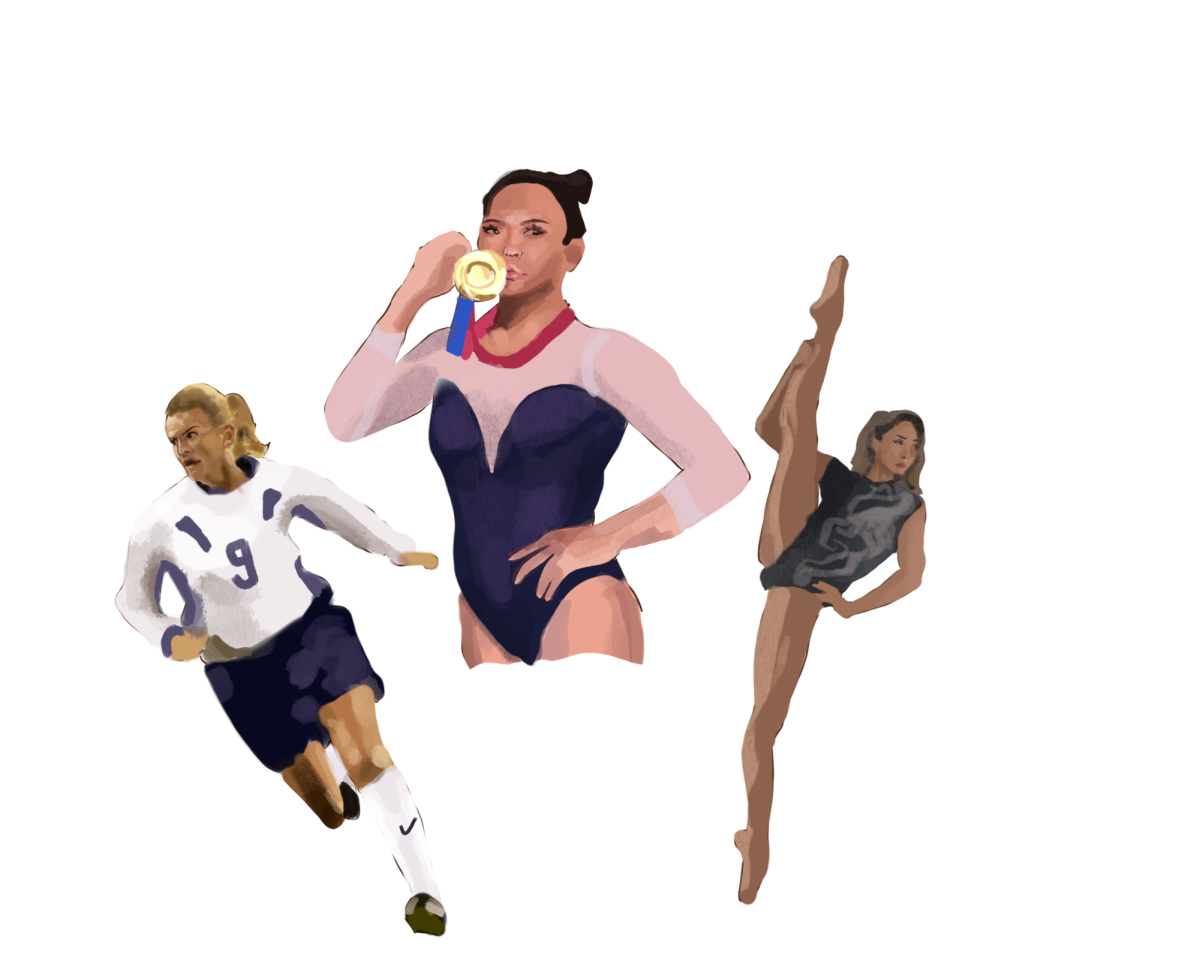Junior Zoe Sherer laces up her pointe shoes, the soft satin concealing the hours of dedication, pain, and perseverance behind every graceful movement. As she prepares for another rigorous practice, she thinks of Candy Tong, a professional ballet dancer and model who has carved her own path in the industry.
“She is really inspiring because of how strong of a woman she is,” Sherer said. “She is really independent and started her own business, which I also want to do when I’m older.”
For Sherer, Tong’s impact goes beyond dance — her success as an entrepreneur and performer resonates deeply, especially because of their shared cultural background.
“She’s an Asian immigrant who has gotten work in the dance industry and has been really successful and well known, which is inspiring,” Sherer said. “She’s impacted (young girls)
by representing that minority in dance.”
As Women’s History Month celebrates the resilience and achievements of female athletes, role models like Tong continue to inspire young female atheletes to push past barriers and pursue their passions with confidence.
Similarly, junior track and field athlete Lilia Kuzmicheva said her role model, Sunisa Lee, an Olympic gold medallist in gymnastics, empowers girls by challenging societal prejudices.
“She defeated a lot of stereotypes, especially in a sport like gymnastics, because I didn’t know it was possible for girls to do all those tricks that she could do,” Kuzmicheva said. “Young girls watching her on TV and seeing those things … look up to that.”
Athletic Director Jennifer Crane said female athletes like Mia Hamm, a renowned soccer player, have opened new career opportunities for women.
“Mia Hamm’s impact on the commercialization of women’s sports has undoubtedly paved the way for female athletes to gain more visibility and financial opportunities,” Crane said. “She was one of the first female athletes to secure major endorsement deals, proving that women’s sports could be marketable.”
Crane said her admiration for Hamm stems from Hamm’s character and values.
“I remember her being a really hard worker and (having) a huge level of humility when she was being interviewed,” Crane said. “Most of her interviews always related back to her passion and love for the sport, and that’s something that stuck with me because that’s why I played sports.”
While she didn’t gain technical sports knowledge from Hamm, Crane said she still learned valuable lessons from her.
“She wasn’t the sole influencer but influenced the way that I handle myself in the athletic arena in regards to sportsmanship and holding yourself with a certain stature in the athletic arena,” Crane said.
Like Crane, Sherer said Tong taught her crucial values, such as being perseverant in the face of setbacks.
“Always push yourself, be your own person and take your own path because she got injured, which can be career-ending for a dancer,” Sherer said.
When injuries like these happen, Kuzmicheva said looking up to female athletes motivated her to stay persistent.
“Similar to (Sunisa Lee), I’ve dealt with injuries, but I have to remind myself that even if you do get injured and are out for a part of the season, that doesn’t mean that you can’t get far in your sport,” Kuzmicheva said.
And Crane said having female athletes to learn from when she was younger was beneficial to her career
“(Hamm) was not just a great female soccer player — she was a great athlete,” Crane said. “Watching her excel on the world stage, break records and lead her team to victory showed me that womens sports deserve the same level of respect, recognition and investment as mens sports.”
Kuzmicheva also said professional female athletes have played a vital role in her goals for the future.
“It’s important to have a role model that you can look to throughout your sport and have someone that you can remember when you’re struggling with something,” Kuzmicheva said.
While womens sports are often overlooked, Crane said their impact is still felt.
“Without (Hamm) there might have been someone else, but I think every single person who’s contributed to this cause is important and leaves a legacy for any female athlete, whether it be like a high school athlete, a college athlete, it has an impact on them, and oftentimes we don’t know about it,” Crane said. “Whether as an athlete, coach or athletic director, I’ve seen firsthand how important it is to push for equal resources, facilities and respect for female athletes.”


